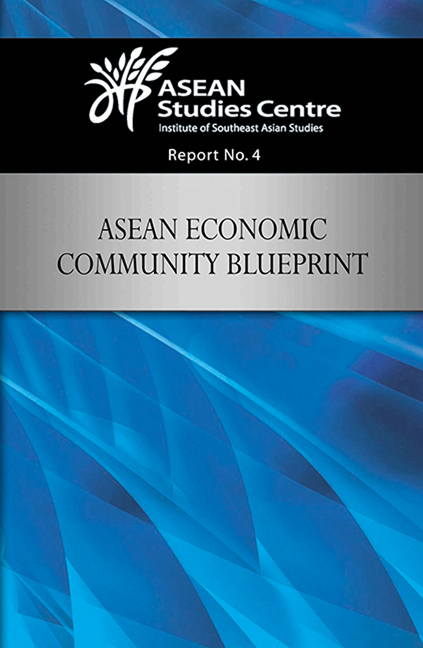Book contents
- Frontmatter
- Contents
- Introduction
- I ASEAN Roundtable 2008: ASEAN Economic Community Blueprint
- I ASEAN Roundtable 2008: ASEAN Economic Community Blueprint
- II Background Papers
- Annex I Programme of the ASEAN Roundtable 2008
- Annex II List of Participants
- Annex III List of NTBs Affecting the ASEAN Priority Sectors for Integration
I - ASEAN Roundtable 2008: ASEAN Economic Community Blueprint
from I - ASEAN Roundtable 2008: ASEAN Economic Community Blueprint
Published online by Cambridge University Press: 21 October 2015
- Frontmatter
- Contents
- Introduction
- I ASEAN Roundtable 2008: ASEAN Economic Community Blueprint
- I ASEAN Roundtable 2008: ASEAN Economic Community Blueprint
- II Background Papers
- Annex I Programme of the ASEAN Roundtable 2008
- Annex II List of Participants
- Annex III List of NTBs Affecting the ASEAN Priority Sectors for Integration
Summary
Background of the Roundtable
ASEAN has made progress on the road to an ASEAN Economic Community (AEC). However, it has to overcome a number of obstacles, and individual member countries have to take difficult domestic as well as regional measures for ASEAN to do so. The obstacles and measures have to do with non-tariff barriers (NTBs) to intra-ASEAN trade, involvement of ASEAN business in regional economic integration, national investment regimes, competition policy, infrastructure development, and international production networks.
This was the conclusion that emerged from the ASEAN Roundtable 2008 on the “ASEAN Economic Community Blueprint”, which was jointly organized by the ASEAN Studies Centre (ASC), the Regional Economic Studies (RES) Programme of the Institute of Southeast Asian Studies (ISEAS), and the Konrad Adenauer Stiftung (KAS) on 28 July 2008 in ISEAS, Singapore. The programme is presented in Annex I. The brainstorming session discussed the realities of the AEC Blueprint and the prospects of and obstacles to its implementation.
Taking part were knowledgeable personalities from government, the private sector, and academia. Some of the leading participants were S. Pushpanathan of the ASEAN Secretariat, Myrna Austria of the Philippines’ De La Salle University, David Parsons of Indonesia's Chamber of Commerce and Industry, M. Sornarajah of the National University of Singapore, Kaushik Das and Adam Schwarz of McKinsey & Co., Soy Martua Pardede of the ASEAN Competition Institute in Jakarta, Biswa Nath Bhattachartyay of the Asian Development Bank Institute, and Ikuo Kuroiwa of IDE-JETRO, Japan. The complete list of participants is presented in Annex II.
The AEC Blueprint
In 2003, ASEAN embarked on a bold project to accelerate the integration of the regional economy and establish an ASEAN Economic Community (AEC) by 2020. Later, that deadline was brought forward to 2015. The AEC envisages ASEAN as a single market and production base with free flow of goods, services, investments, capital and skilled labour. To achieve this, a number of initiatives were introduced, which eventually led to the adoption of the AEC Blueprint in November 2007. This includes action plans, targets and timelines for implementing economic integration measures to move the AEC process forward.
- Type
- Chapter
- Information
- ASEAN Economic Community Blueprint , pp. 3 - 12Publisher: ISEAS–Yusof Ishak InstitutePrint publication year: 2009



